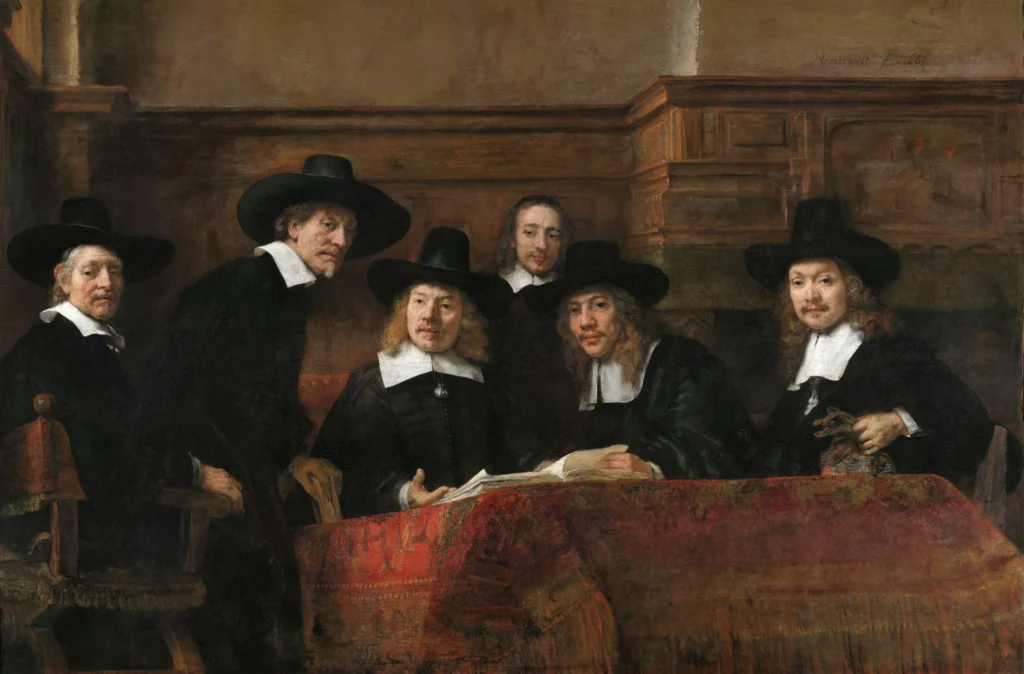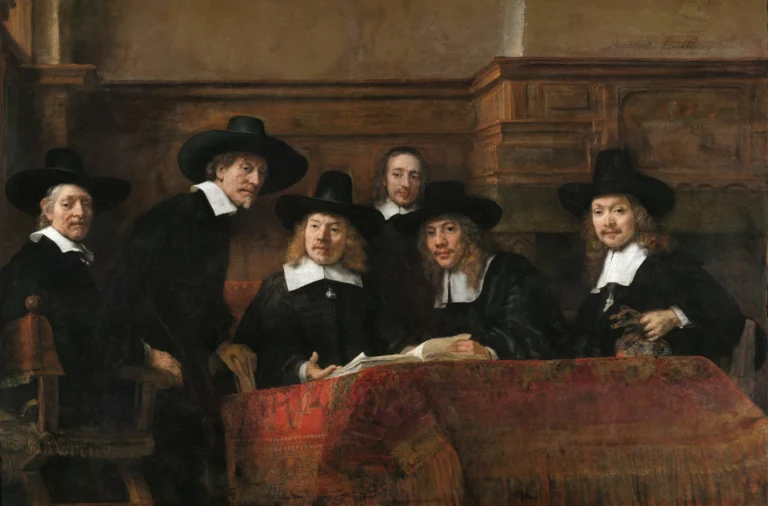Syndics of the Drapers' Guild
Created in 1662, Syndics of the Drapers' Guild. painted by Rembrandt van Rijn, illustrates a group of five syndics and their clerk in a masterfully composed portrait. This dynamic representation features sophisticated chiaroscuro and a warm color palette, exemplifying Rembrandt’s skill in capturing both the physical likeness and the psychological depth of his subjects. Set against an elegantly detailed backdrop, the syndics’ engaged expressions and gestures invite viewers to engage with the narrative of their role within Amsterdam's thriving textile trade.
Year 1662
About the Artwork
Did You Know
Liked what you see? Add it to your collection.
Enjoyed reading? Share it.
... continued
Date and Medium
The painting was executed in 1662 using oil on canvas.
Dimensions
It measures 191.5 cm in height and 279 cm in width.
Location
The painting is currently housed at the Rijksmuseum in Amsterdam, Netherlands.
Subjects
The artwork depicts five syndics (directors) of the Drapers' Guild of Amsterdam, along with their clerk. These individuals were responsible for examining the quality of cloth that merchants wished to sell to members of the guild.
Composition and Style
Rembrandt used a classical composition technique, employing horizontals to unify the group. The painting features three main horizontal lines: the edge of the table, the level of the heads, and the edge of the wainscoting. However, Rembrandt avoided formal rigidity by introducing deviations and curves within these lines. The painting is characterized by its use of chiaroscuro and warm color harmonies, including a prominent red rug on the table and golden tints in the background. The overall palette is warm, with strong blacks and whites in the men's costumes adding to the noble and harmonious effect.
Interpretation
The traditional interpretation is that the men are seated on a platform, addressing the assembly of the Drapers' Guild and presenting an account of the year's business. The gesture made by the official near the center of the picture was a standard oratorical gesture understood by seventeenth-century observers.
Historical Context
The syndics depicted in the painting held their positions from Good Friday 1661 to Good Friday 1662. The book on the table likely refers to the guild's accounting records.
This painting is considered one of Rembrandt's greatest group portraits, praised for its subtle composition, psychological depth, and masterful use of light and texture.









